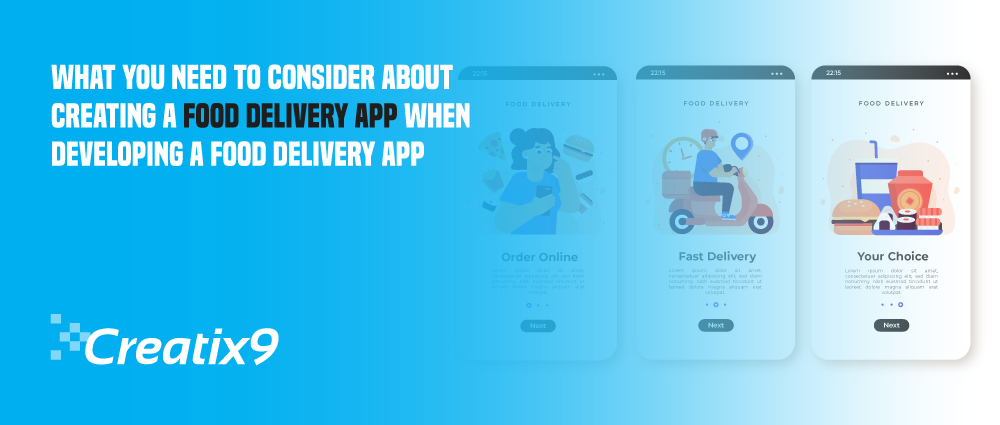
Meal delivery iOS application Development Company in the UK is becoming more and more popular. Since 2014, traditional dine-in revenues have grown 30% slower than online orders and deliveries. By 2024, Statista projects that the global market for “platform-to-consumer” distribution will be worth US$96.8 million. The effects of COVID-19 suggest that this increase will continue unabated for some time.
Food delivery services were more necessary as a result of COVID-19 because of social isolation measures and people’s fear of illness. Thus, a golden age for food delivery seems to have begun in 2020, especially for aggregators like Uber Eats. After only three weeks of 2020’s lockout, the food delivery startup Instacart claimed that its 2022 goals had been met.
Although there is tremendous competition, new entrants to the food delivery sector shouldn’t be deterred by it. There is a good probability of success if you have a unique idea and reliable software with cutting-edge features. Finding weaknesses in the services of your competitors can help you develop a smart remedy.
This blog is to assist you in beginning the creation of a meal delivery app. But before we get into the specifics, let’s take a look at how COVID-19 affected the sector and how the way food was delivered changed as a result of the pandemic.
A Market Analysis and Outlook for Food Delivery In 2021
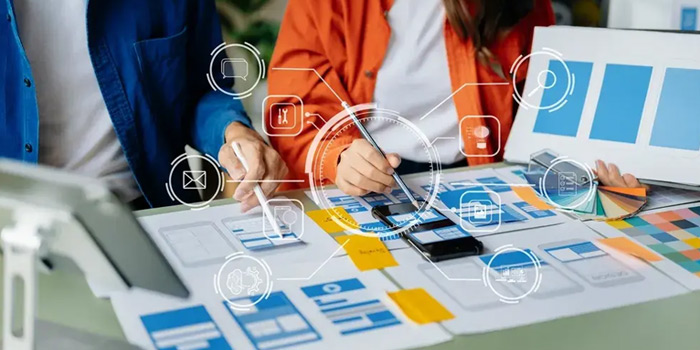 The meal delivery sector is still thriving in 2021. Although consumers returning to in-person dining more regularly, the use of food delivery apps has not decreased. Although the future of meal delivery applications seems promising for the foreseeable future, both established businesses and tiny entrepreneurs still face two significant obstacles to overcome.
The meal delivery sector is still thriving in 2021. Although consumers returning to in-person dining more regularly, the use of food delivery apps has not decreased. Although the future of meal delivery applications seems promising for the foreseeable future, both established businesses and tiny entrepreneurs still face two significant obstacles to overcome.
High Competition
The market may appear to be controlled by the biggest players in the sector, but that isn’t totally accurate. Globally, the number of food delivery firms has increased since the epidemic and is continuously growing.
Yet, there is little distinction. Customers often prefer well-known businesses like UberEats because there are so many apps that look the same. To attract the attention of your target audience, your food delivery app should provide a distinctive service or set of features. For instance, the AI-powered voice ordering assistants from the business. With the use of its cutting-edge solution, restaurants may automate the receipt and processing of orders received through various channels, freeing up restaurant workers for other duties.
Commodification for Restaurants
Lowering rates is another effective strategy for drawing diners and developing a sizable restaurant clientele. With fees of up to 30% each order, third-party delivery services like Uber Eats is unaffordable. These costs place a significant financial burden on venues who are already having to deal with the pandemic’s effects.
What Characteristics Do Users Want From Meal Delivery Apps?
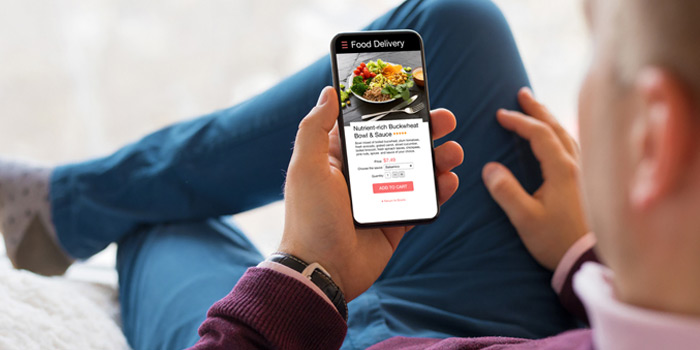 Whatever business model you decide on, it is obvious that you must offer open pricing and superior customer service. To satisfy the needs and expectations of your users, your app should reflect current industry trends in addition to its basic functions. Let’s go over everything that has to be in your food delivery app development companies in the UK, plan, from the fundamentals to the cutting-edge ideas.
Whatever business model you decide on, it is obvious that you must offer open pricing and superior customer service. To satisfy the needs and expectations of your users, your app should reflect current industry trends in addition to its basic functions. Let’s go over everything that has to be in your food delivery app development companies in the UK, plan, from the fundamentals to the cutting-edge ideas.
The Essential Elements of Food Delivery Applications
You need to create three distinct applications for clients, couriers, and restaurants if you want to start a food delivery platform that links diners with nearby eateries and offers delivery. To ensure that the ordering and delivery processes are simple and convenient for all parties, each app must contain a set of fundamental characteristics. Below, we’ve highlighted each application’s key attributes.
Client App
Users should have no trouble viewing neighbouring eateries’ menus within this app. The app should have order tracking capabilities and search filters for added convenience. Think about putting these elements in place.
- Creating accounts on social media platforms and logging in
- Search parameters (by cuisine, price category, delivery time, and such)
- Taking menu orders
- Several methods of payment
- Tracking deliveries in real-time
- Using push notifications
- Past order history
- Review and rate
- 24/7 client assistance
App for Courier (Delivery)
The customer’s app and the delivery app are comparable. It must include a built-in GPS navigation feature for pick-ups and drops, quick access to available orders for delivery employees, and both. Some crucial functions of delivery apps include:
- Altering one’s profile and registering
- Managing orders (such as reviewing order specifics, approving or denying a delivery request, etc.)
- Update on status (accepted, picked up, or delivered)
- Using push notifications
- Delivered order history
Merchant (Restaurant) App
A restaurant app’s main function is to alert the platform’s affiliated restaurants of incoming orders. Restaurant management can use the app to choose a courier who is available to deliver an order once it is ready.
Some platforms give restaurants access to analytical tools so they may compile data that improves customer retention. In addition, you should include the following functions in your road map for developing restaurant mobile apps:
- Management of content (adding photos and updating menus)
- Establishment of a loyalty campaign (create vouchers and sales, promote special offers)
- Financial management
- Using push notifications
- Communication across interfaces (with couriers and customers)
Trends for 2023 in Food Delivery Apps
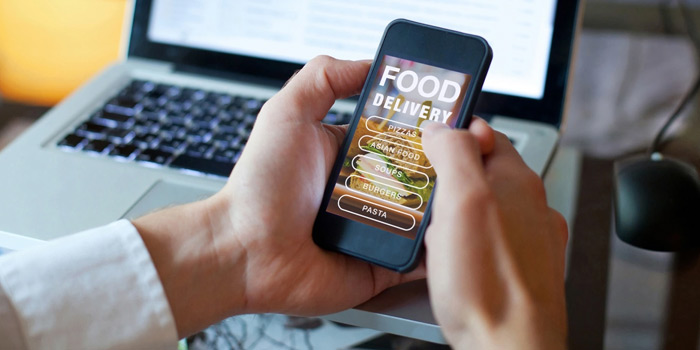 An uncomplicated app is insufficient to compete in the food delivery industry. It makes sense to include cutting-edge and popular features in your programme. These are a few illustrations of creative approaches used by meal delivery apps as examples of inspiration.
An uncomplicated app is insufficient to compete in the food delivery industry. It makes sense to include cutting-edge and popular features in your programme. These are a few illustrations of creative approaches used by meal delivery apps as examples of inspiration.
Orders on Social Media
Consumers spend hours on social media, and delivery services have seen a lucrative market in food orders placed on these platforms. App development companies in the UK, developed a new ordering function for Instagram and connected its ordering system with social media networks. Now, more than 13,000 partner restaurants can take orders via the “Order Food” button on their Instagram pages or through stickers in their stories. According to the firm, this functionality will increase order volumes and help eateries increase revenue.
Smartwatch
Given that smartwatches are likely our second-favorite technology after smartphones, it is not surprising that the market for them is currently seeing a significant upswing. Some businesses created apps for smartwatches after taking this trend into consideration.
To make ordering easier and reach a wider audience, Domino’s released an Android smartwatch app that is a condensed version of its online and mobile apps. Without using their phones, users may place a pizza order using the “Simple Order” feature, which just requires a few clicks, and then their smartwatch will show information about the order’s status.
Why Not Use Virtual Assistants Like Alexa And Siri In The Online Meal Ordering Process?
These technologies quickly become our digital companions, helping us with a variety of mundane activities. Recent Siri shortcuts from Caviar allow customers to monitor the status of their orders or place repeat orders by using instructions like “Hey Siri, order my regular pizza” or “Hey Siri, Caviar order status.”
The Technological Stack’s Definition
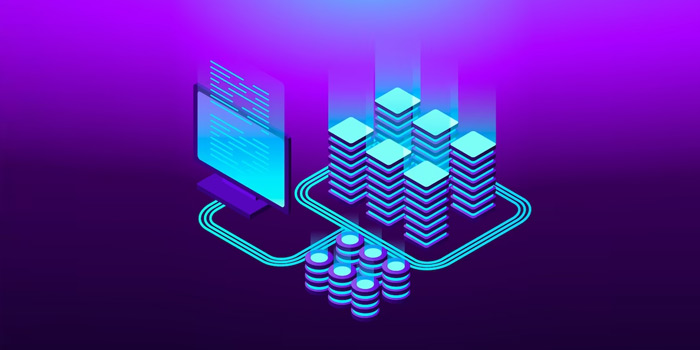 The essential components of your app determine the required technologies. Food delivery apps need to be supported by a dependable and scalable backend because they handle a lot of data. As consumers pay for orders via the app, integrated payment mechanisms are also important. Application programming interfaces (APIs) for restaurant listings provide comprehensive information about restaurants, and integrated GPS tracking systems enable the tracking of orders’ travels.
The essential components of your app determine the required technologies. Food delivery apps need to be supported by a dependable and scalable backend because they handle a lot of data. As consumers pay for orders via the app, integrated payment mechanisms are also important. Application programming interfaces (APIs) for restaurant listings provide comprehensive information about restaurants, and integrated GPS tracking systems enable the tracking of orders’ travels.
Which SDKs and tools can be applied to the creation of on-demand food delivery apps? The tech stack required to construct a meal delivery application is shown below.
-
Backend
You require a strong backend solution to safely store all the information linked to food delivery.
-
Monetary System
There are several options for making payments online, and they all have distinct formats. It’s vital to incorporate an effective and dependable payment platform. The Stripe and Braintree SDKs are straightforward and reliable, and they function well with apps that require online payment.
-
Listing of Restaurants
The provision of access to all the necessary information, such as restaurant addresses, operating hours, menus, and other details, should be your top priority when starting a meal delivery platform with various restaurants.
-
GPS Monitoring
Any meal delivery software needs to use location-based technology to determine the user’s location. Take into account tools like Google’s Geolocation API for Android and the CoreLocation framework for iOS application Development Company in the UK to pinpoint the user’s location and track the progress of orders.
-
Messaging Programme
Proper communication is essential for speedy and seamless deliveries. A system of in-app messaging maintains lines of communication open and enables restaurants, couriers, and consumers to stay in touch.
Conclusion
One of the rapidly expanding trends from the previous decade was mobile food delivery, which, with the COVID-19 crisis, instantly became a necessary service. The business offers a wealth of investment prospects, but there is also fierce rivalry. The likelihood of success is high, though, if a clever business plan and a quick-thinking approach to product development are used.
An attractively designed, high-performing app is crucial when beginning a food delivery company. Hiring a skilled digital service provider in the UK is the most efficient way to create such software.

